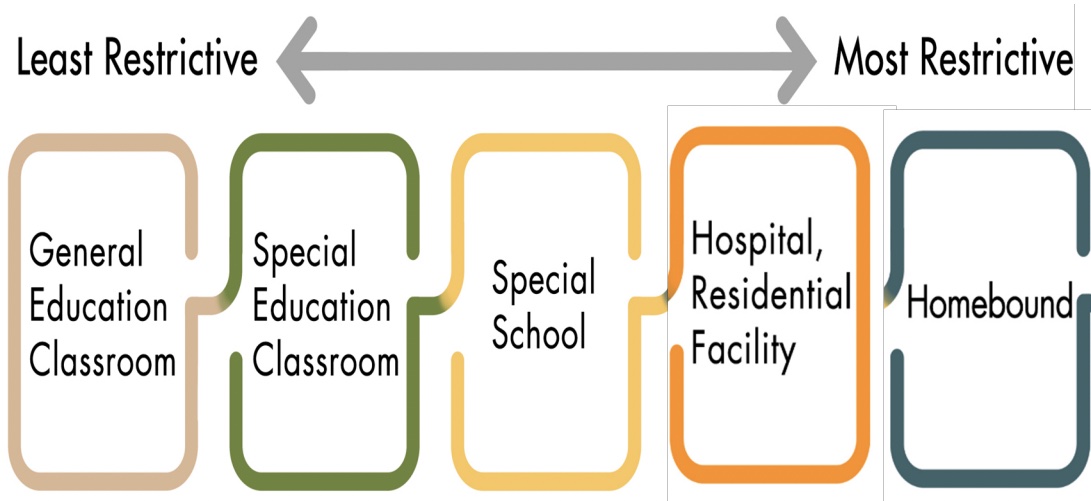What is the Least Restrictive Environment (LRE)?
The least restrictive environment (LRE) is a core concept under the Individuals with Disabilities Education Act (IDEA). LRE refers to the idea that a disabled student should be educated alongside both disabled and non-disabled peers, in a mainstream classroom, to the maximum extent appropriate. LRE means students should only be removed from a general education classroom if learning cannot be achieved with the provision of supplementary aids and services in that general education setting.
How does the law define LRE?
“Each public agency must ensure that— (i) To the maximum extent appropriate, children with disabilities, including children in public or private institutions or other care facilities, are educated with children who are nondisabled; and (ii) Special classes, separate schooling, or other removal of children with disabilities from the regular educational environment occurs only if the nature or severity of the disability is such that education in regular classes with the use of supplementary aids and services cannot be achieved satisfactorily.” 34 CFR § 300.114(a)(2). “Supplementary aids and services means aids, services, and other supports that are provided in regular education classes, other education-related settings, and in extracurricular and nonacademic settings, that enable children with disabilities to be educated with nondisabled children to the maximum extent appropriate.” 34 CFR § 300.42.
How is LRE determined?
Under IDEA, a student’s placement is determined on an annual basis by the student’s Individualized Education Program (IEP) team. The IEP team includes the student’s parents and other persons knowledgeable about the student and placement options.
The IEP team must determine which placement represents the LRE for the student. The principle of LRE means that an IEP should provide a student with the supplementary aids and services necessary to allow the student to make educational progress while participating in the general education setting alongside non-disabled peers to the maximum extent appropriate. Because a student’s disability-related needs are unique to that student, the LRE for one student is not necessarily the LRE for another student.
IEP teams should also consider the following factors when determining a student’s placement in the LRE:
- To the extent appropriate, the student should be educated in the school that he or she would attend if non-disabled.
- Consideration should be given to any harmful effects of the placement on the student or on the quality of services he or she needs.
- The student’s placement options must not be based solely on the student’s eligibility category, disabling condition, or administrative convenience.
- Each student with a disability should be given the opportunity to participate as appropriate in nonacademic and extracurricular services and activities.
What is the Continuum of Alternative Placements?
There is a continuum of placement options that range from the least restrictive educational environment to the most restrictive educational environment. 34 CFR § 300.115. The educational environment considered the least restrictive is a “mainstream” or “regular” education classroom. Educational instruction in a home-based or homebound setting is the most restrictive educational environment. A variety of alternative educational placements fall along the least-restrictive to most-restrictive continuum.
Some common alternative placements are listed in the continuum chart below:

Public education agencies are not required to have a full continuum of alternative placements available in every school building. A school district, for example, might have a self-contained classroom at some but not all school sites. This gives districts some discretion for choosing a location to serve the placement chosen by an IEP team.
If a public education agency does not have a full continuum of alternative placements, it may be required to contract with another public education agency or private provider to provide a student with placement in that student’s LRE. For example, if a small school district does not have a separate day school for students with disabilities, and there is a student in the district whose IEP team has determined that a separate day school is the least restrictive environment appropriate for that student, the district may have to pay for transportation and tuition for the student to attend a private school for students with disabilities.